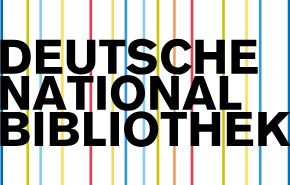METHODOLOGICAL APPROACHES TO THE FORMATION OF SPIRITUALITY AND MORAL QUALITIES IN PRESCHOOL CHILDREN
Abstract
This article investigates diverse methodological approaches for cultivating spirituality and moral qualities in preschool children, emphasizing the critical role of early childhood education in shaping lifelong ethical and reflective capacities. Drawing on theories from moral psychology, spiritual pedagogy, and developmental education, the study proposes an integrative model that weaves together virtue‐based instruction, experiential learning, guided reflection, and culturally responsive practices. Key components include narrative pedagogy (storytelling and parable use), ritualized group activities (gratitude circles, cooperative games), artistic expression (music, visual arts, movement), and reflective dialogue facilitated through age‐appropriate questioning. The paper synthesizes empirical findings demonstrating that these methods foster core virtues—empathy, compassion, honesty, and respect-while nurturing a nascent spiritual awareness characterized by wonder, interconnectedness, and self‐transcendence. Attention is also given to the involvement of families and community traditions as co‐educators in reinforcing moral narratives and spiritual rituals. By analyzing case studies and program evaluations from diverse cultural settings, the article identifies best practices for curriculum design, educator training, and assessment strategies that respect children’s developmental stages and cultural backgrounds. The proposed framework offers practical guidelines for early childhood practitioners seeking to embed moral and spiritual formation into daily preschool routines, thereby laying a solid foundation for children’s ethical growth, social responsibility, and inner well‐being.
Keywords
spirituality formation; moral education; preschool children; integrative pedagogy; virtue‐based instruction; narrative pedagogy; guided reflection; ritualized group activities; artistic expression; family–community engagement; culturally responsive practice; early childhood development.How to Cite
References
1.1.Durdikulovich, K. A. (2022). THE ROLE OF TEACHER-STUDENT TRADITIONS IN THE DEVELOPMENT OF NATIONAL SINGING. TA'LIM VA RIVOJLANISH THANHILI ONLINE SCIENTIFIC JOURNAL, 112-114.
2.2.Kosimov, A. (2025). IMPROVING THE METHODOLOGY OF USING SIMULATIVE TECHNOLOGIES IN THE TRAINING OF FUTURE MUSIC TEACHERS BASED ON AN INTEGRATIVE APPROACH. International Journal of Artificial Intelligence, 1(1), 129-131.
3.3.Niyozova, M. N. Q. (2023). The role of the educator in implementing pedagogical diagnostics in preschool educational organizations. Oriental renaissance: Innovative, educational, natural and social sciences, 3(4), 331-335.
4.4.Durdikulovich, A. K. (2025). APPLICATION OF SIMULATIVE TECHNOLOGIES IN TRAINING MUSIC EDUCATORS BASED ON THE CREDIT-MODULE SYSTEM. Ethiopian International Journal of Multidisciplinary Research, 12(02), 71-73.
5.5.Durdikulovich K. A. SPECIFIC FEATURES OF DEVELOPING CHILDREN'S HEARING ABILITIES AND VOICE IN PRE-SCHOOL EDUCATIONAL ORGANIZATIONS //IMRAS. – 2024. – T. 7. – No. 4. – P. 204-208.
6.6.Abdulaziz Kosimov Durdikulovich. (2025). METHODOLOGY FOR APPLYING SIMULATIVE TECHNOLOGIES IN MUSIC EDUCATION BASED ON AN INTEGRATIVE APPROACH. International Multidisciplinary Journal for Research & Development, 12(02). Retrieved from https://www.ijmrd.in/index.php/imjrd/article/view/2538
7.7. Kosimov, A. (2025). IMPROVING THE METHODOLOGY OF USING SIMULATIVE TECHNOLOGIES IN THE TRAINING OF FUTURE MUSIC TEACHERS BASED ON AN INTEGRATIVE APPROACH.International Journal of Artificial Intelligence, 1(1), 129–131. Retrieved from https://inlibrary.uz/index.php/ijai/article/view/70793
8.8. Durdikulovich, K. A. (2022). THE ROLE OF TEACHER-STUDENT TRADITIONS IN THE DEVELOPMENT OF NATIONAL SINGING.ONLINE SCIENTIFIC JOURNAL OF EDUCATION AND DEVELOPMENT ANALYSIS, 112–114. Retrieved from https://sciencebox.uz/index.php/ajed/article/view/1520
9.9. Uralovich, T. F. (2021). Conducting classes on fine arts based on information and communication technologies.International Engineering Journal For Research & Development, 6, 3-3.
10.10. Turapova, R. N. (2023). Mechanisms for Improving Children's Dialogical Speech.Vital Annex: International Journal of Novel Research in Advanced Sciences, 2(9), 49-53. Kholmurodov, Sh. O. (2022). SISTEMA INFORMATSIONNYX TECHNOLOGY V OBRAZOVANII STUDENTOV-INFORMATIKOV.Digital, 3(1), 1.

This work is licensed under a Creative Commons Attribution 4.0 International License.
Authors retain the copyright of their manuscripts, and all Open Access articles are disseminated under the terms of the Creative Commons Attribution License 4.0 (CC-BY), which licenses unrestricted use, distribution, and reproduction in any medium, provided that the original work is appropriately cited. The use of general descriptive names, trade names, trademarks, and so forth in this publication, even if not specifically identified, does not imply that these names are not protected by the relevant laws and regulations.





